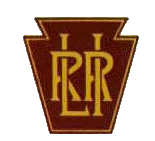|
You’ll
notice the cab has an overhang on both sides of the arched roof and the
stack has a triangular base. Handrail configuration is different
from the RS2 According to the Diesel Spotter’s Guide, the trucks
are the same, but the trucks shown on the RS2 below appear to be of a
different style. The nose is more square at the top and sides.
RS2 and RS3 units have more rounded noses.
Rectangular
fan housing atop the long nose. RS2 and RS3 have large, round fan
housing.
“Resembles
the S2/S4 on a lengthened under-frame with type B road trucks and a short
hood which, optionally, could house a steam generator.” The Second
Diesel Spotter’s Guide
|
 LIRR Alco RS1-3 Spotting Info
LIRR Alco RS1-3 Spotting Info
